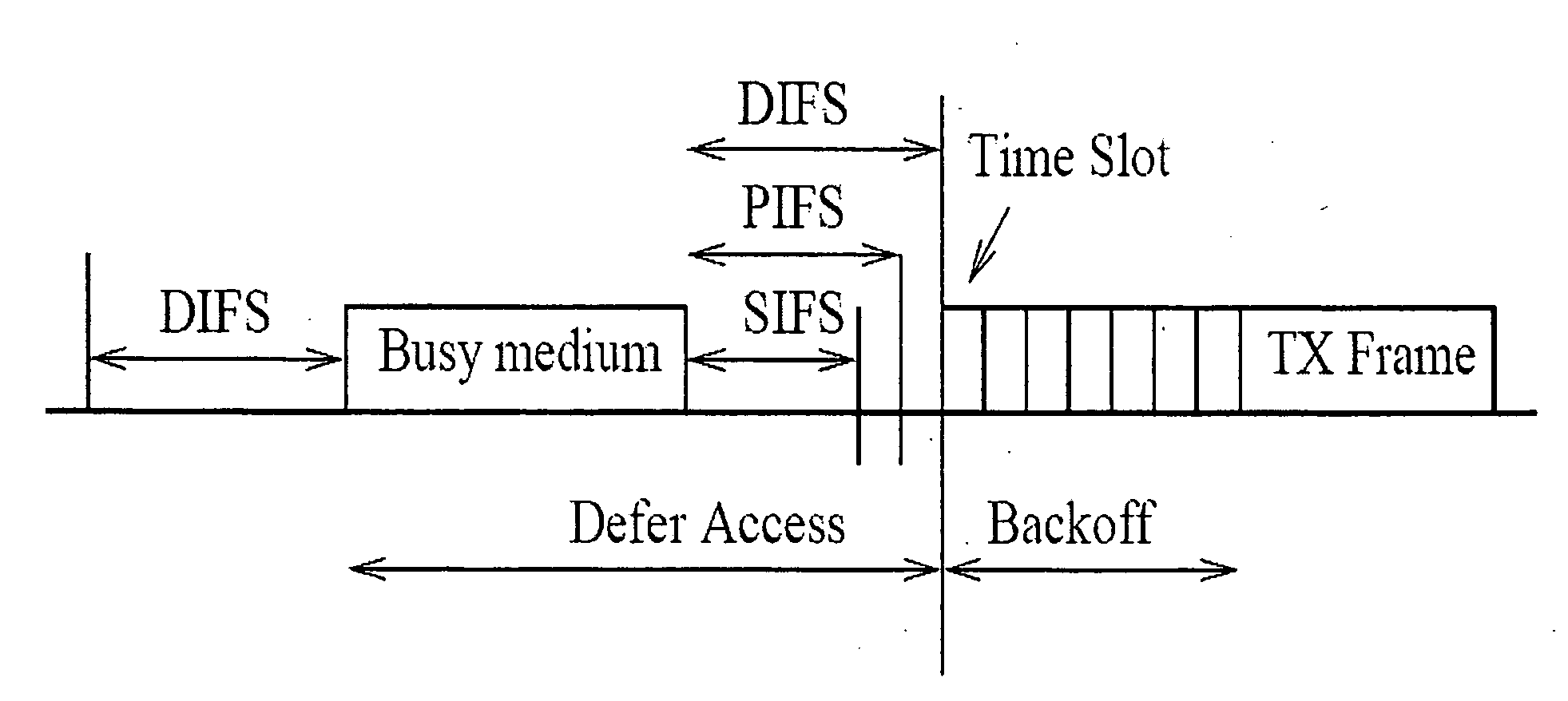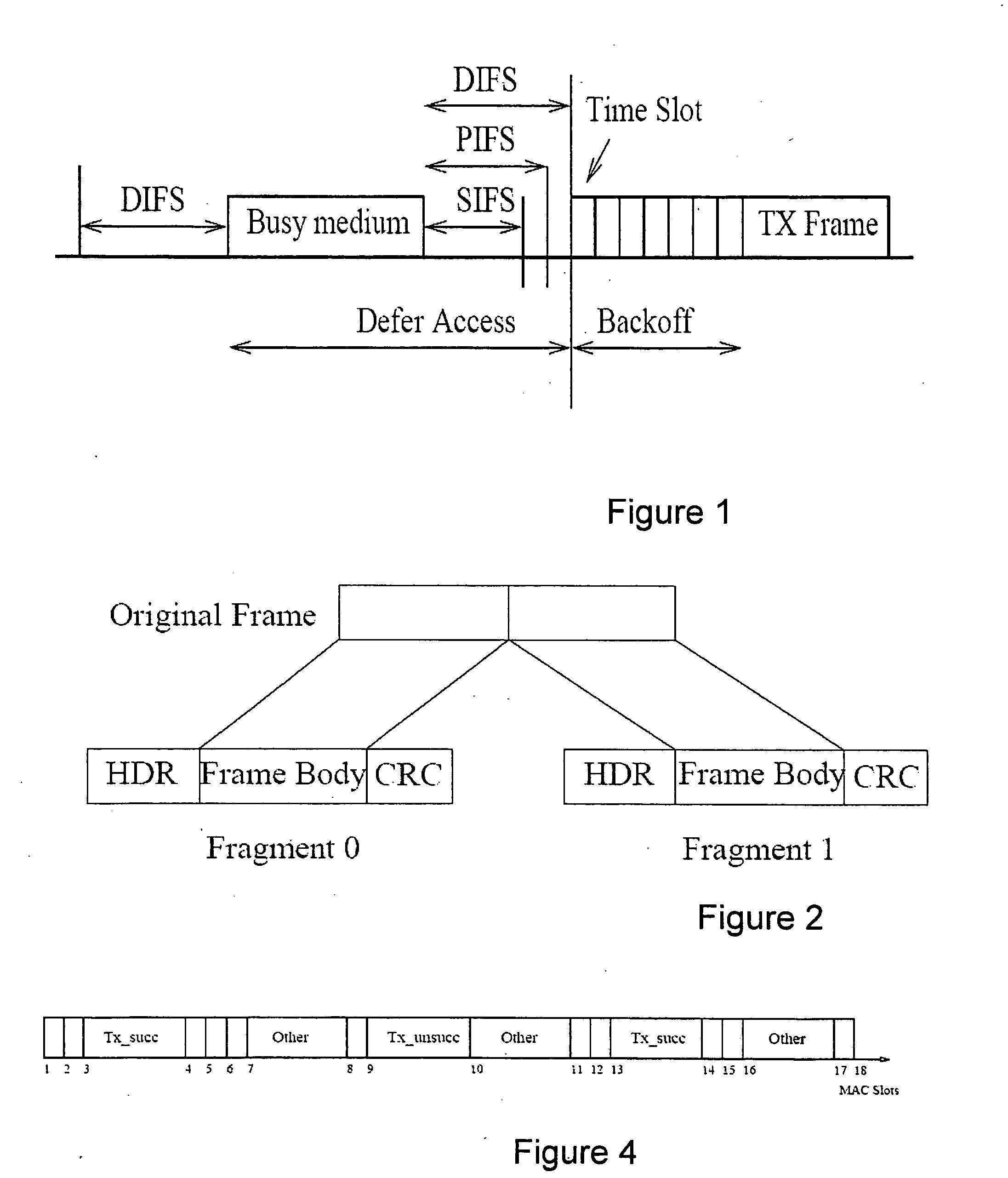Method and apparatus for estimating link quality
- Summary
- Abstract
- Description
- Claims
- Application Information
AI Technical Summary
Benefits of technology
Problems solved by technology
Method used
Image
Examples
Embodiment Construction
[0041]Before describing the preferred embodiment of the present invention, we would first of all outline the main impairments that can affect transmissions between an 802.11 sender and receiver.
[0042]It is first of all important to emphasize that a two-way (or four-way with RTS-CTS) handshake is used in 802.11. Hence, the quality of a link is determined by the channel conditions at both the sender and the receiver stations. For example, low link-quality at the receiver can mean that data packets transmitted by the sender cannot be decoded at the receiver. Similarly, low link-quality at the sender can mean that ACK packets transmitted by the receiver cannot be decoded at the sender. Thus:[0043]Measuring the SNR (or other local properties) at either the sender or receiver alone is insufficient to determine the link quality. Instead it is necessary to recognize the intrinsically two-way nature of a link in 802.11 when measuring its quality.[0044]Links are directional since data packets...
PUM
 Login to View More
Login to View More Abstract
Description
Claims
Application Information
 Login to View More
Login to View More - R&D
- Intellectual Property
- Life Sciences
- Materials
- Tech Scout
- Unparalleled Data Quality
- Higher Quality Content
- 60% Fewer Hallucinations
Browse by: Latest US Patents, China's latest patents, Technical Efficacy Thesaurus, Application Domain, Technology Topic, Popular Technical Reports.
© 2025 PatSnap. All rights reserved.Legal|Privacy policy|Modern Slavery Act Transparency Statement|Sitemap|About US| Contact US: help@patsnap.com



